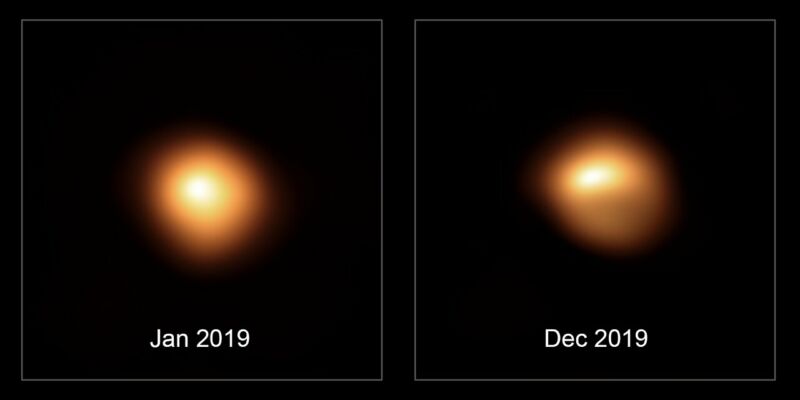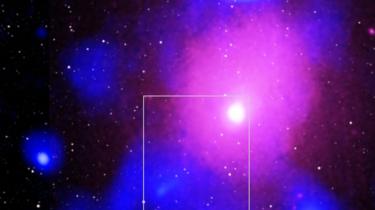Siorac
Full Member
- Joined
- Sep 1, 2010
- Messages
- 24,039
Yeah but he lives in Florida.You want to be really depressed, read this guy's CV: https://www.linkedin.com/in/storymusgrave
Yeah but he lives in Florida.You want to be really depressed, read this guy's CV: https://www.linkedin.com/in/storymusgrave
True. Best CV I've ever read though.Given that the guy you linked to went to university the first time in 1957, I'm going to guess he's not a 17 year old intern.
Also I actually have a mutal contact with this older guy!
You want to be really depressed, read this guy's CV: https://www.linkedin.com/in/storymusgrave
Harsh....but true. I bet I know more about Pop Culture and History than him though, which is what really counts
Don't feel too bad. Nobody is future will remember either of you as he didn't get to name the planet.
I also liked the way he warms you up with being a professor of industrial design and astronaut, then just as you are reeling from that, he hits you with also being a trauma surgeon, emergency room doctor, and researcher in brain surgery.I like the way he doesnt bother to mention the 6 Space Shuttle missions until over half way down his page. Just like 'oh and then there was this other thing i once did'.
He's definitely taking some liberties there with calling shit he does on the side a job, considering all those overlaps and embellishments. Pretty sure one of those things is just him landscaping his own feck off garden.You want to be really depressed, read this guy's CV: https://www.linkedin.com/in/storymusgrave
I also liked the way he warms you up with being a professor of industrial design and astronaut, then just as you are reeling from that, he hits you with also being a trauma surgeon, emergency room doctor, and researcher in brain surgery.
His other professorship in biological engineering is by this point, showing off,
The Daniel K. Inouye Solar Telescope has produced the highest resolution observations of the Sun’s surface ever taken. In this movie, taken at a wavelength of 705nm over a period of 10 minutes, we can see features as small as 30km (18 miles) in size for the first time ever. The movie shows the turbulent, “boiling” gas that covers the entire sun. The cell-like structures – each about the size of Texas – are the signature of violent motions that transport heat from the inside of the sun to its surface. Hot solar material (plasma) rises in the bright centers of “cells,” cools off and then sinks below the surface in dark lanes in a process known as convection. In these dark lanes we can also see the tiny, bright markers of magnetic fields. Never before seen to this clarity, these bright specks are thought to channel energy up into the outer layers of the solar atmosphere called the corona. These bright spots may be at the core of why the solar corona is more than a million degrees!
This movie covers an area 19,000 x 10,700 km (11,800 x 6,700 miles or 27 x 15 arcseconds).
Obsessed with Betelgeuse at the moment. Sorry if this is a repost.
Blows my mind we can image a star that’s 700 light years away and see a disc. Helps that Betelgeuse is so enormous. Could the dimming means it’s about (relatively speaking) to go supernova?

The disc shape could be due to ejection of gas or dust propagated by stellar winds (which can distort the image), at least for now as the observations are not conclusive.

Ok, so there's something called “variability” with pulsating stars (in this instance we will refer to only photometric variability — i.e. variability in terms of perceived brightness or magnitude because of periodic shifts in thermonuclear energy being expended and convective cell transfer activity and radial-velocity changes). Our own sun evidences variability, too (over a roughly 11 year cycle when the poles flip completely from North to South and vice versa, which causes a lot of periodic turbulence)...

Any apparent dimming of Betelgeuse leads to a lot of excitement because folks expect it to go supernova at last, but that typically coincides with its variability — which unpredictable to a degree, but approximately 60 months for primary variations and 18-300 months for secondary long-short cycle variations, and when primary and secondary variations coincide you can get extreme dimming (which might explain the events of recent months). The disc shape could be due to ejection of gas or dust propagated by stellar winds (which can distort the image), at least for now as the observations are not conclusive.
EDIT: For what it's worth, poor Eta Carinae is theoretically more likely to go supernova in the astronomic near future than Betelgeuse, but doesn't get as much fanfare...
Happens occasionally I think, human eye detectable I assume you mean. Definitely a fair few in written record. See the crab nebula etcWhen was the last time a supernova was observed by mankind? (if at all)
The last live supernova to be detected by the unaided eye was SN1604 in 1604 in the Ophiuchus constellation. We have since observed many other supernovae with telescopes (like the famous ASASSN-15lh: https://arxiv.org/abs/1507.03010), but none with an unaided eye, and none in the Milky Way — which can be too close to focus on, and too shrouded in interstellar dust...that makes it very, very hard to stumble across one as there are only 2-3 supernovae in the Milky Way per century (the general observable universe gives us a much better chance of detecting a live one with vast expanses of intergalactic space and billions of galaxies).When was the last time a supernova was observed by mankind? (if at all)
https://www.smithsonianmag.com/smar...va-presented-challenge-astronomers-180965138/The conventional view of the cosmos placed the Earth at the center of our solar system, and in fact the whole universe. This Earth-centric worldview came originally from Aristotle and Ptolemy, two ancient philosophers. Aristotle’s On the Heavens said that the Earth was the realm of imperfect things and was changeable, while things far away from the Earth were perfect and didn’t change. From these principles, he developed a complicated model that could (sort of) accurately predict the movement of planets in the Solar System and other observable phenomena.
The 1604 supernova was the last one recorded in the Milky Way to date, but in the preceding century, astronomers had observed another of these rare events as well as a smaller nova. Aristotle’s perspective didn’t account for these events.
At this point, Galileo was a lecturer in mathematics and Kepler was the Imperial Mathematician in Germany, a position that Brahe previously held. Their positions required that both of them make attempts to figure out what the supernova was and answer the question of what it represented.
These observations, which came at a turning point in the history of understanding of the cosmos, provided the groundwork for further theorizing that eventually led to the understanding that the Earth was not the center of the universe. However, the astronomers who believed they were seeing the birth of a new star were wrong: they were seeing brilliant celestial deaths happening close to home, the kind that modern astronomers can only wish to observe.

This is a surprisingly good watch/listen:
On a tangential note, you have to wonder how many views a comparable but non-mainstreamed 2-3 hours long academic talk would have, surely much lower than 1.5 million in just 2 days?
Scientists have detected evidence for a colossal explosion in space - five times bigger than anything observed before.
The huge release of energy is thought to have emanated from a supermassive black hole some 390 million light years from Earth.
The eruption is said to have left a giant dent in the Ophiuchus galaxy cluster.

Scientists detect "biggest explosion since big bang"
https://www.bbc.co.uk/news/science-environment-51669384

Fascinating find.
"I've tried to put this explosion into human terms and it's really, really difficult," co-author Melanie Johnston-Hollitt told BBC News.
"The best I can do is tell you that if this explosion continued to occur over the 240 million years of the outburst - which it probably didn't, but anyway - it'd be like setting off 20 billion, billion megaton TNT explosions every thousandth of a second for the entire 240 million years. So that's comprehensibly big. Huge."
Can somebody who knows better explain something to me?
Astronauts have said that space smells of "diesel fumes and barbecue" - and I've read that this smell is caused by dying stars.
But what I can't grasp, is how would it be possible, even with the age of the universe, for that smell to have permeated close enough for human astronauts to be able to smell it?
Stars are light years apart, hundreds of trillions of miles. I don't understand how said smell could have reached us yet.
Our whole solar system is the remnant of dead stars, so we can never be too far away from it.Can somebody who knows better explain something to me?
Astronauts have said that space smells of "diesel fumes and barbecue" - and I've read that this smell is caused by dying stars.
But what I can't grasp, is how would it be possible, even with the age of the universe, for that smell to have permeated close enough for human astronauts to be able to smell it?
Stars are light years apart, hundreds of trillions of miles. I don't understand how said smell could have reached us yet.
Can somebody who knows better explain something to me?
Astronauts have said that space smells of "diesel fumes and barbecue" - and I've read that this smell is caused by dying stars.
But what I can't grasp, is how would it be possible, even with the age of the universe, for that smell to have permeated close enough for human astronauts to be able to smell it?
Stars are light years apart, hundreds of trillions of miles. I don't understand how said smell could have reached us yet.
But we must remember that space is extremely cold, being just about absolute zero.
2.73 Kelvin, to be precise. Quite cold, though we've made it colder on Earth.
Actually, it's possible that the lowest and highest temperatures ever to exist in the Universe have existed on Earth, at least in the last few billion years. Probably not, but it could be true.
Do you mean those record highs and lows may have existed on Earth, as well as in other places at other times, or just on Earth?
You know much more about the subject than I do, but surely the sheer magnitude of stars and planets in the universe would make it highly improbable?
Don't flame me too hard, I'm an amateur.
I don't think we do know that.While we know that space is made up of nothing
It doesn't take into account the possibility of equally or more advanced aliens, but that's a complete unknown to us right now. But we've created temperatures both lower and higher in labs than are naturally occurring in the Universe (as far as we know). The caveat to the "higher" part of that is that the very, very early Universe was very, very strange, and creating such high temperatures has among other things been to explore the conditions of that early Universe.
2.73 Kelvin, to be precise. Quite cold, though we've made it colder on Earth.
Actually, it's possible that the lowest and highest temperatures ever to exist in the Universe have existed on Earth, at least in the last few billion years. Probably not, but it could be true.
I don't think we do know that.
